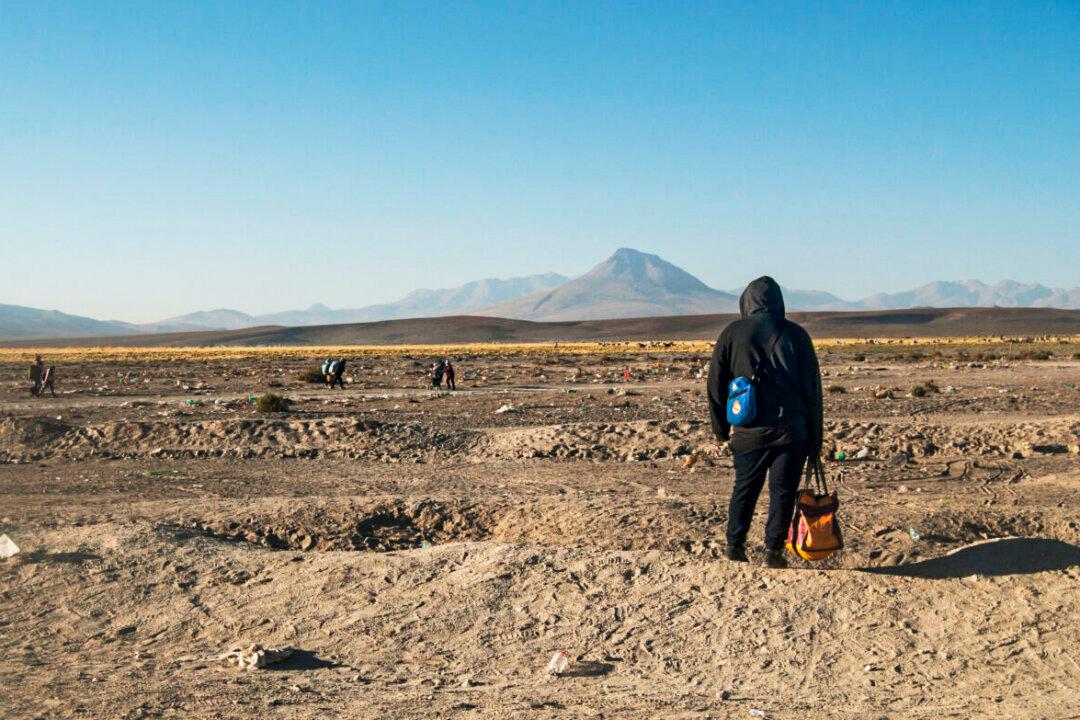In the high-altitude desert shared by Chile and Bolivia lies a remote stretch of dirt road that marks their sparsely patrolled border.
Once military patrols are out of sight, illegal migrants dash across the road at all hours of the day, and continue their journey north from Pisiga, in Bolivia, or south from Colchane, in Chile.





